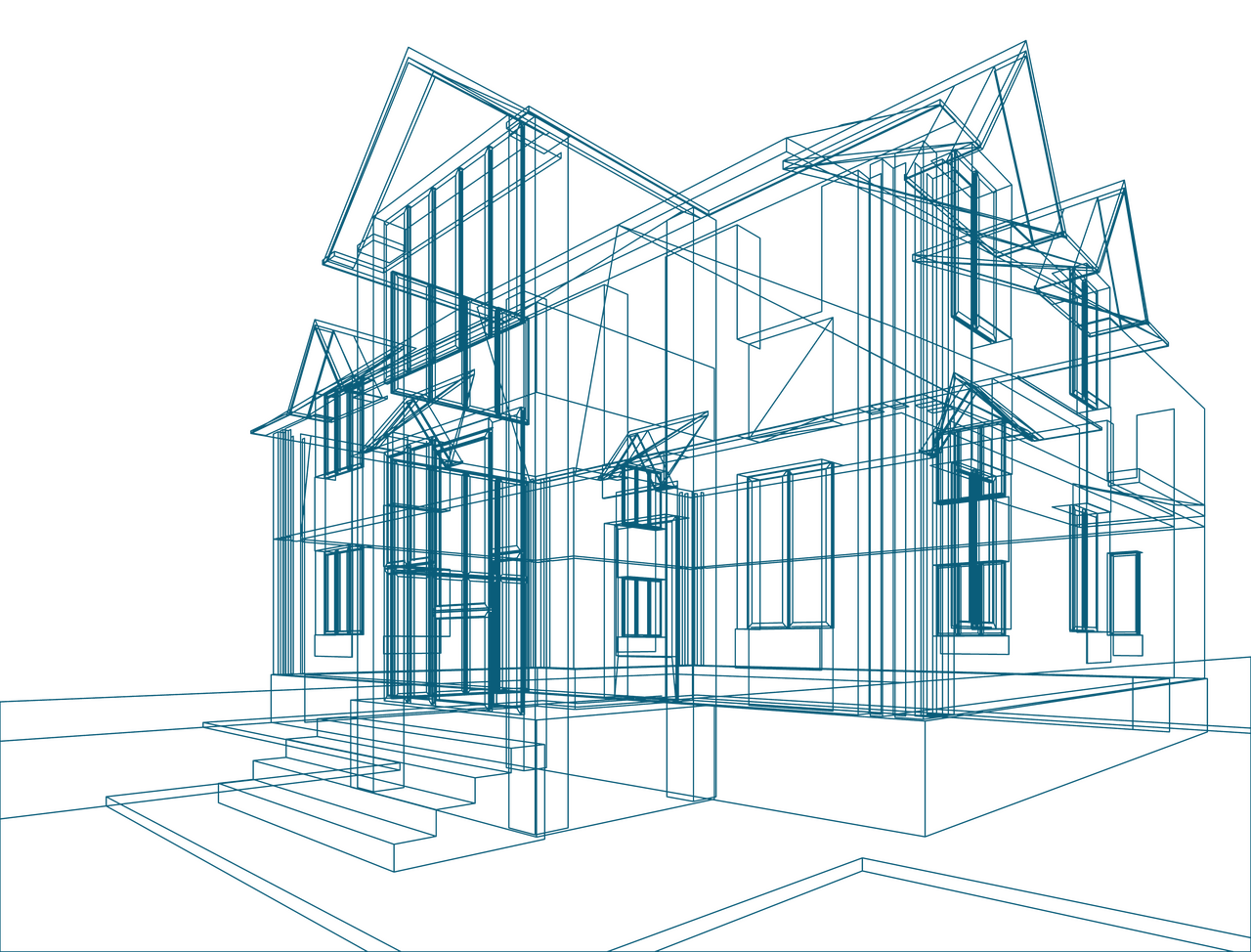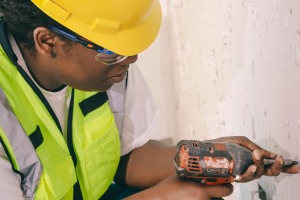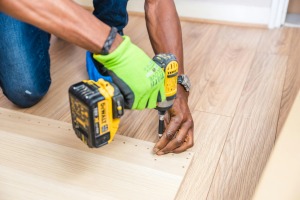


News I published 24 December 2021
What will prefab be used for and made of in the future?
Usage of prefabricated elements in construction has grown significantly over the past decade or so. According to architects, who are excellent indicators of future developments due to their large and early role in the construction process, the usage of prefab will continue to grow steadily in the coming years. Using ever more prefab will impact the construction process as a whole, the way we build and the materials we choose to use.
For manufacturers of construction materials, knowing for which parts of a building prefabricated elements will be used the most and what materials will be preferred for them is crucial for future profit and maybe even for future survival. That is why, for the Q3 2021 report of USP Marketing Consultancy’s European Architectural Barometer, we did not only ask European architects from eight major European markets whether they expect growth of prefab. We also asked them which parts of a building they expect the use of prefabrication the most, and what materials they expect to be used for them.
Prefab continues to be used the most for facades and external walls
Just like before, European architects expect the use of prefabricated elements to grow the most for the construction of facades and external walls. They are currently the most important destination for prefabricated elements, and according to architects, this will continue to grow the most.
But prefab can be used for many other parts of a building, which is also evident in the architects’ expectations. Architects expect the use of prefab to grow in a wider variety of areas, like internal walls, pitched roofs and ceilings. These are among the parts of buildings where architects already see prefab elements used a lot. After facades and external walls, the use of prefab is expected to grow the most in the construction of those building parts.
Does a variety of application areas mean a variety of basic construction materials used?
The above shows that, on average, architects expect external walls, internal walls, ceilings and pitched roofs to be the areas most affected by prefab in the future. Varied though these areas are, there is one basic construction material that architects expect to play the most important role in the manufacture of prefab elements for all of them. That basic material is wood or timber, the material most connected to prefabrication in general.
Aside from that one uniting element of timber, each building part for which prefab is expected to be used more has its own characteristic construction material that is dominantly used. After timber, architects expect concrete to be the material dominantly used for prefabricated elements for facades, for instance. Next to timber, gypsum or plaster is the dominant material for prefabricated inner walls, and steel, to a lesser extent, for prefabricated parts of pitched roofs.
Conclusion
It does seem that, although timber remains the most dominant basic material for prefabricated elements in general, specific construction materials are dominant for prefabricated elements used for specific parts of a building. For producers and manufacturers of construction materials, it will be invaluable to know which area of application is expected to be most affected by prefab. The above only shows the average expectations of European architects, however.
For detailed information on expectations of architects in the countries you operate in, as well as on how the use of prefab will affect decision making in the construction process in eight European countries, we refer you to the Q3 2021 report of USP Marketing Consultancy’s European Architectural Barometer.

Read more


12 December 2024 I Dirk Hoogenboom
Buying Behavior of Handymen


12 December 2024 I Henri Busker
Handymen Radar – Private Labels vs. Branded Products


12 December 2024 I Dirk Hoogenboom
Sustainability and Painting – What Matters Most?


12 December 2024 I Zeynep Kutsal
Are European Painters Getting Younger?

Fresh Insights Await
Our relevant reports
Delve into the newest findings across various market segments, crafted for a cutting-edge overview. Explore our insightful reports, brimming with up-to-date data, trend analyses, and in-depth examinations, all tailored to provide you with a comprehensive understanding of the current market dynamics.
Construction
Home Improvement
Installation
Special reports
Construction
Decision making process Q3 2024
2024 87 pages
Unveil the decision-making processes in the construction industry through the lens of European architects. Discover the factors that influence crucial decisions and the interplay among different stakeholders.
2,000 Euro
Construction
Prefab H1 2024
2024 63 pages
Discover the adoption rate and benefits of prefabrication technology among European contractors in H1 2024. Understand the driving forces behind prefab usage and its impact on project efficiency and cost-saving.
6,000 Euro
Construction
Sustainability 2024
2024 72 pages
Painter Insight Monitor 2024 will focus on understanding the specific needs, preferences, and challenges faced by painters when it comes to sustainable products.
11,000 Euro
Construction
Importance of branding & branding funnels 2024
2024 62 pages
This report offers a comprehensive overview of importance of branding and branding funnels with a specific focus on European handymen. Brand behaviour is covered for each country, showing purchasing power, differences regarding quality, sustainability, online shopping, innovation-habit and private labels,
8,600 Euro
Construction
Future of construction Q2 2024
2024 82 pages
Explore the evolving future in construction sector among European architects in Q2 2024. Delve into the factors driving material preferences and the impact on construction aesthetics and sustainability.
2,000 Euro
Construction
Trends in material usage Q1 2024
2024 102 pages
Explore the evolving trends in material usage among European architects in Q1 2024. Delve into the factors driving material preferences and the impact on construction aesthetics and sustainability.
2,000 Euro
Home Improvement
European Garden Monitor
2023 43 pages
Explore the European Garden Monitor, a comprehensive platform dedicated to garden health monitoring in Europe. Access valuable resources and expert advice today.
12,000 Euro
Home Improvement
Purchase channels Q2 2024
2024 90 pages
The European Home Improvement Monitor offers valuable insights on purchase channels in the European home improvement industry, examining the evolving preferences and behaviors of consumers across traditional retail and emerging online platforms.
3,500 Euro
Home Improvement
Sustainability Q1 2024
2024 81 pages
Delve into sustainability trends in the home improvement sector in Q1 2024. Discover consumer preferences and the shift towards eco-friendly home improvement solutions.
3,500 Euro
Home Improvement
DIY versus DIFM Q4 2021
2024 113 pages
This report is a must-have if you’re in the home improvement industry. It provides a wealth of information on the behaviour of DIY and DIFM consumers, their motivations, and the factors that influence their purchasing decisions.
3,150 Euro
Home Improvement
DIY or DIFM Q4 2023
2024 70
Explore the prevailing trends between DIY and DIFM in Q4 2023. Understand consumer preferences and the factors influencing their choice between DIY and DIFM.
3,500 Euro
Home Improvement
Branding Q3 2023
2023 93 pages
This report offers an extensive overview of the home improvement industry, with a focus on branding and the most popular brands within different categories. Within this report, you will gain insights into how customers perceive home improvement brands and what motivates them to buy certain products.
3,500 Euro
Installation
Services in the installation sector Q4 2024
2025 102 pages
This report provides a comprehensive view of the installer's requirements for services from manufacturers. Within the report, you will find information on the most needed services in each category: commercial processes, engineering, products & installation, and repair & maintenance. It also examines the services that installers offer to their customers.
3,250 Euro
Installation
Prefab Q3 2024
2024 110 pages
Uncover the adoption of prefabricated products in HVAC installations during Q2 2022. Delve into the benefits and challenges associated with prefabrication in HVAC.
2,800 Euro
Installation
Branding Q3 2024
2024 74 pages
Discover the power of branding in the home improvement sector. Explore how strong branding influences consumer preferences and purchase decisions.
3,500 Euro
Installation
Prefab Q3 2024
2024 119 pages
This report offers a comprehensive view of the installers’ involvement and needs regarding prefabricated electrical installations.
3,250 Euro
Installation
Smart & Connected Products Q2 2024
2024 120 pages
This report provides a comprehensive view of the attitudes of installers toward smart building solutions, specifically among electrical installers and their clients. In the report, you will find insights into the installers' experiences with installing smart products and the willingness of end users to invest in such solutions, as well as their motivations and pain points.
3,250 Euro
Installation
Smart and connected products Q2 2024
2024 129
This report provides a comprehensive view of the attitudes of installers toward smart building solutions, specifically among HVAC installers, plumbers and their clients. In the report, you will find insights into the installers' experiences with installing smart products and the willingness of end users to invest in such solutions, as well as their motivations and pain points.
2,800 Euro
Special reports
European Sustainability Report 2024
2024 51 pages
This report provides in-depth insights based on triangulation of key market information and data as well as data from USP Marketing Consultancy’s key monitors that are carried out year in, year out. The focus of this report is on the most important stakeholders within the construction industry, namely architects, contractors, electrical and HVAC installers within The United Kingdom, The Netherlands, Belgium, Germany, Poland, France, Italy, and Spain.
3,950 Euro








